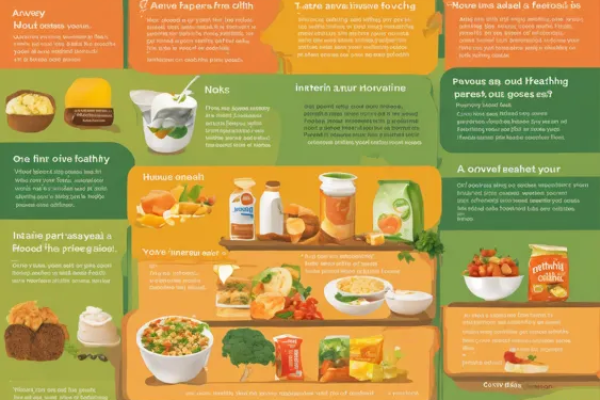
Eating healthy starts with understanding what you’re putting into your body. Reading food labels can unlock key details about nutrition, ingredients, allergens, and more. Follow this comprehensive guide on deciphering those small-print labels to become a mindful, informed food shopper.
Learn the Sections of the Nutrition Facts Label
Food manufacturers are required by the FDA to provide a Nutrition Facts panel listing key details about the nutrient content per serving. But what do all those numbers actually mean? Let’s break down the different sections:
Serving Size
This indicates the serving size that all nutrition information is based on. Pay attention to the serving size and number of servings per container, especially if you plan to consume more or less than one serving.
Calories
The two most important macronutrients – fat and carbohydrates – provide calories. This number tells you how many calories are in ONE serving. To figure out calories for the whole package, multiply the calories per serving by the number of servings.
Macronutrients
These provide calories and energy to fuel your body. There are three main macronutrients:
* **Total Fat:** Includes healthy fats and unhealthy fats. Try to avoid trans and saturated fats.
* **Cholesterol:** Found in animal-based foods. Try to limit daily cholesterol intake to 300 mg.
* **Sodium:** Important for fluid balance but excess sodium can raise blood pressure. Limit to 2,300 mg per day.
* **Total Carbohydrates:** Includes sugars, starch, and fiber. Choose whole grains and limit added sugars.
* **Dietary Fiber and Sugars:** Part of total carbs but listed separately for more detail.Aim for 25-30 grams of fiber daily. Limit added sugars to 25 grams (6 teaspoons) per day for women and 36 grams (9 teaspoons) for men.
* **Protein:** Important for building and repairing tissues. Good sources include lean meats, poultry, fish, eggs, beans, peas, nuts, and seeds.
Micronutrients
These include vitamins and minerals that facilitate chemical reactions and processes in the body. Pay attention to:
* **Calcium:** Needed for bone health, nerve signaling, and muscle contraction.
* **Iron:** Required for oxygen transport in blood and energy metabolism.
* **Vitamin D:** Crucial for bone health and immune functioning.
* **Potassium:** Necessary for fluid balance, nerve transmission, and muscle contraction.
Percent Daily Value (%DV)
This percentage tells you if a food is high or low in a nutrient. 5% DV or less is considered low while 20% or more is high. These percentages are based on a 2,000 calorie per day diet.
When comparing products, opt for foods with higher %DV for fiber, vitamins, minerals and healthy fats like unsaturated fats or omega-3s. Choose products with lower %DV for saturated fat, trans fat, cholesterol, sodium, and added sugars.
Read the Ingredients List
Flipping to the back of a food package reveals the ingredient list – an index of everything contained in the product, listed from most to least abundant by weight.
Scrutinizing this list can provide more awareness of additives like sugars, sodium, fats, and preservatives. It also allows you to spot potential food allergens or animal products if you have dietary preferences or restrictions.
Ingredients like whole grains, healthy fats, fruits, and vegetables should feature more predominantly. Heavily processed foods tend to have longer ingredients lists with chemical-sounding additives. If an ingredient is unfamiliar or unpronounceable, consider doing some research on potential health impacts before consuming large amounts.
Identify Common Food Allergens
Many packaged foods now clearly label major food allergens like milk, eggs, fish, shellfish, tree nuts, peanuts, wheat, and soybeans. This helps consumers with food sensitivities easily avoid trigger ingredients.
By U.S. law, manufacturers must declare if a product contains any of these allergens, most commonly in a “Contains” statement under the ingredients list.
Some companies also voluntarily label for less common allergens like sesame, coconut, and mustard. If avoiding a certain allergen, train your eye to spot relevant ingredients when skimming nutrition labels and ingredients lists. When in doubt, contact the manufacturer directly to inquire about allergen handling procedures.
Check Serving Suggestions
The back of the packaging may provide examples of single serving sizes with photos. While handy for general guidance, be aware that these suggested servings may differ from the precise serving size used to calculate nutrition information.
For the most accurate nutrient data, pay closest attention to the serving size details on the Nutrition Facts panel, doing your own math if consuming more or less food than what is listed.
Learn How to Spot Health Halo Label Claims
Creative package labels can influence perceptions about a product’s health attributes. Terms like “organic” or “natural” may make a food seem virtuous, diverting attention from less favorable aspects of its nutrition profile. This tactic is called a health halo effect.
When assessing products, seek outNutrition Facts panels for the real story on nutrient quality rather than fixingating on feel-good buzz phrases and imagery promoted on the front label.
Also realize that eye-catching claims like “good source of calcium” or “high in vitamin C” only indicate higher amounts of those selective nutrients. The food may still be high in less desirable ingredients like sugar or sodium, for example.
Understand Different Label Claims
Beyond just nutrition numbers, food packaging makes all sorts of promotional statements that can impact purchasing choices. Brush up on common label terminology2:
* **Organic:** At least 95% of ingredients are organic, meaning grown without synthetic pesticides or fertilizers. Organic label must be certified by USDA.
* **Natural:** No artificial ingredients or chemical preservatives added but still may contain antibiotics, hormones, GMOs. Very loosely regulated claim.
* **Non-GMO / GMO-Free:** No genetically modified organisms used. Product has been third-party certified to verify non-GMO status.
* **Gluten-Free:** No wheat, barley, rye or cross-contaminating ingredients that could trigger gluten sensitivity or celiac disease.
* **Sugar-Free:** Less than 0.5 grams of sugar per serving. Oftentimes replaced with low-calorie sweeteners.
* **Good Source:** Provides 10-19% Daily Value of a particular nutrient per serving.
* **Excellent Source / High In:** Provides 20% or more Daily Value of a nutrient.
And the list goes on. For more label literacy, see the FDA’s guide to food labeling terms.
Check The Grade for Meat, Poultry and Eggs
Perishable products like meat, eggs and poultry receive special USDA or FDA grading3 to indicate quality:
* **USDA Grades for Beef:** Prime (highest), Choice, Select (lowest)
* **USDA Grades for Pork:** There are no quality grades. Pork is inspected for wholesomeness and graded by yield of usable cuts.
* **FDA Grades for Eggs:** AA (highest), A, B (lowest)
Higher quality scores generally mean better flavor and tenderness. Choice grade is still very flavorful for most cuts of beef. Lower quality does not necessarily indicate spoiled or unsafe products; it may just affect texture and taste.
Pick Out Peak Produce
Unlike most shelf-stable goods, fresh fruits and vegetables do not carry nutritional labels. So how to pick the best?
* **Prioritize Appearance:** Seek bright, vibrant colors and avoid mushy spots, wrinkles or mold.
* **Let Ripeness Guide You**: Ripe produce tends to smell fragrant. Avoid hard, unripe fruit lacking aroma.
* **Ask Questions:** Wondering when those berries were picked or if a melon is sweet? Ask produce staff about deliveries, sweetness and uses.
* **Consider Growing Conditions:** Locale and seasonality impacts flavor. Strawberries ship more easily than fragile heirloom tomatoes, for example.
* When possible, choose organic to reduce pesticide exposure from produce that tends to harbor more chemical residue like apples, spinach greens, strawberries, etc.
Arm Yourself with Tools
Deciphering labels becomes much easier with the right helper apps and resources:
* **Mobile Apps**: Fooducate, Yuka and Buycott scan barcodes to grade products and flag concerning ingredients. Very useful grocery shopping aids.
* **Manufacturer Websites**: Dig deeper by cross-referencing brands’ websites for more nutrition details, certifications, and sourcing transparency.
* **FDA Guidance**: For consumer education on food labeling terms, health claims, allergens, additives, and more check FDA.gov and Nutrition.gov.
Reading between the label lines while food shopping empowers smarter choices to nourish yourself and your family. By taking time to understand nutrition facts panels, ingredients lists, claims, grades, and signs of quality, this habit becomes second nature over time. Soon making good dietary decisions can become almost automatic according to your health needs and food preferences.




